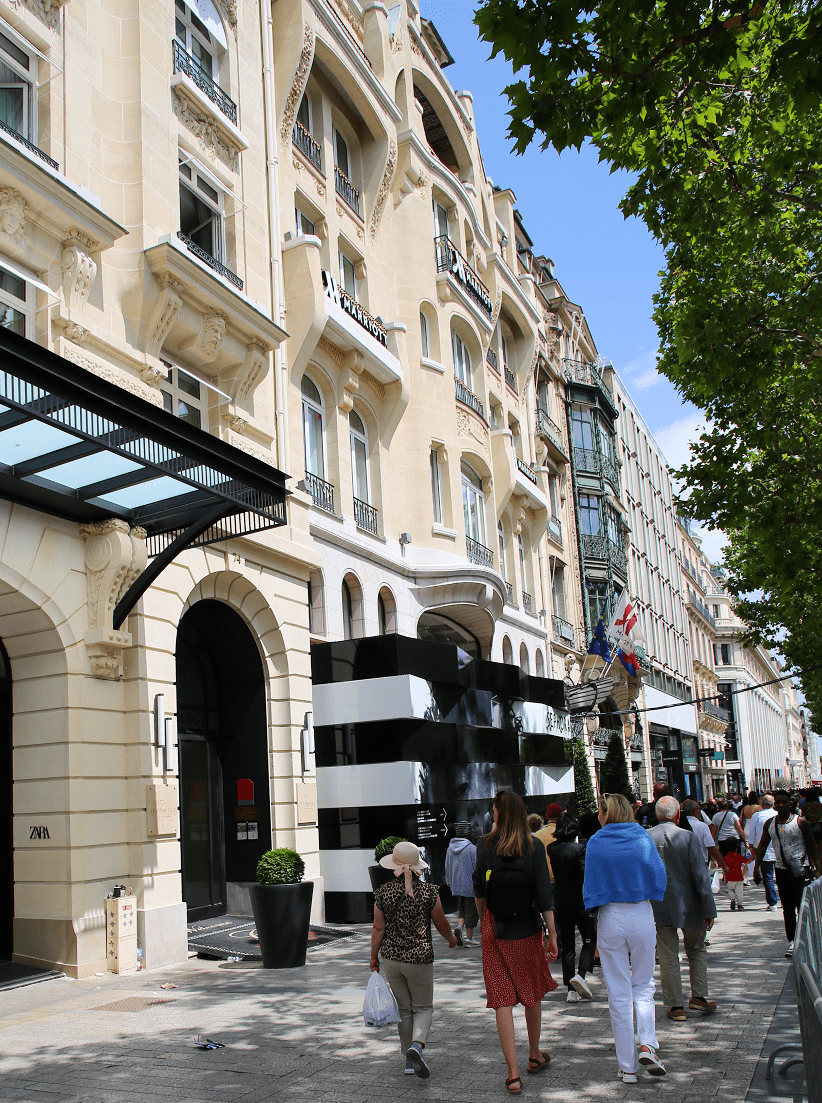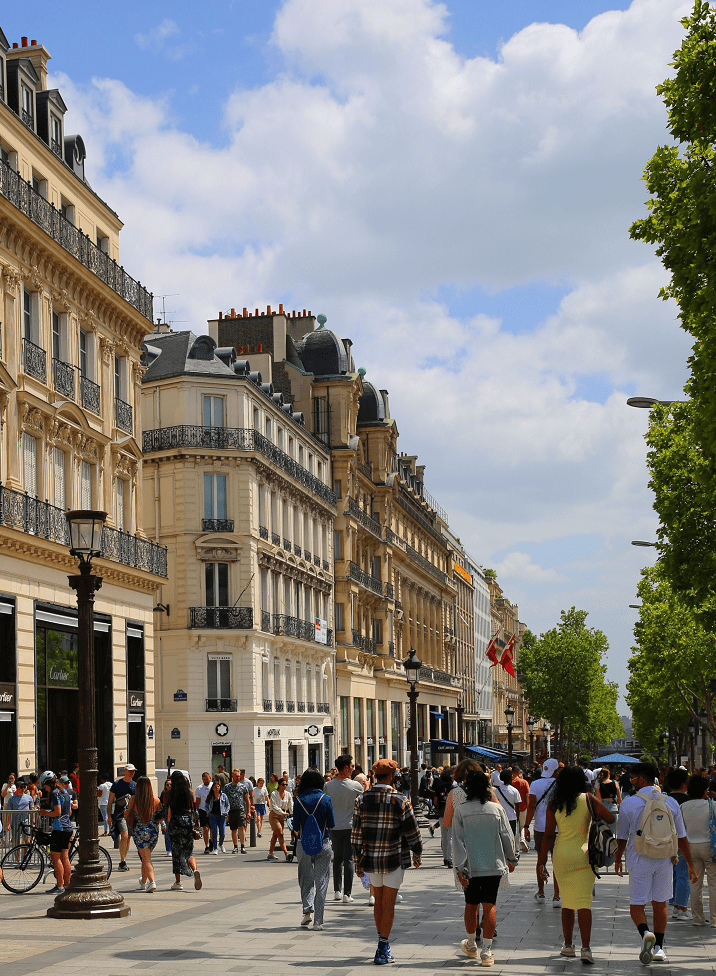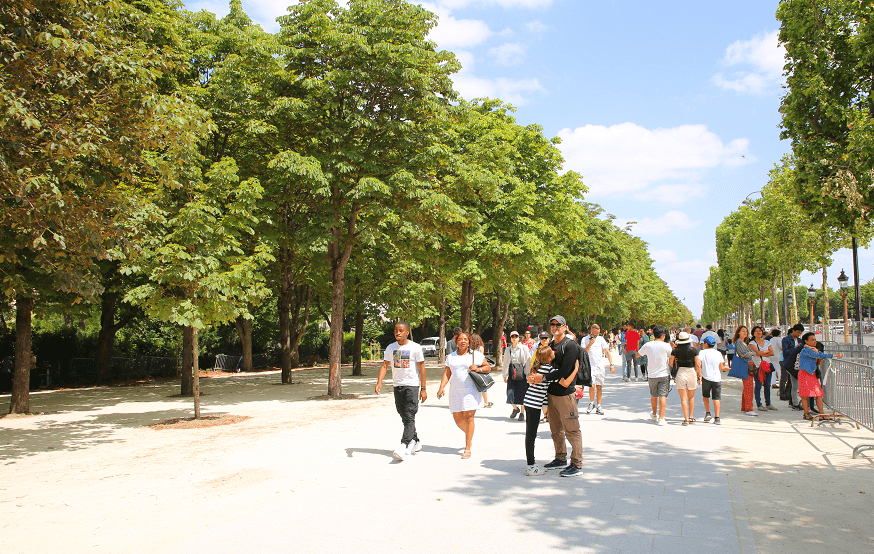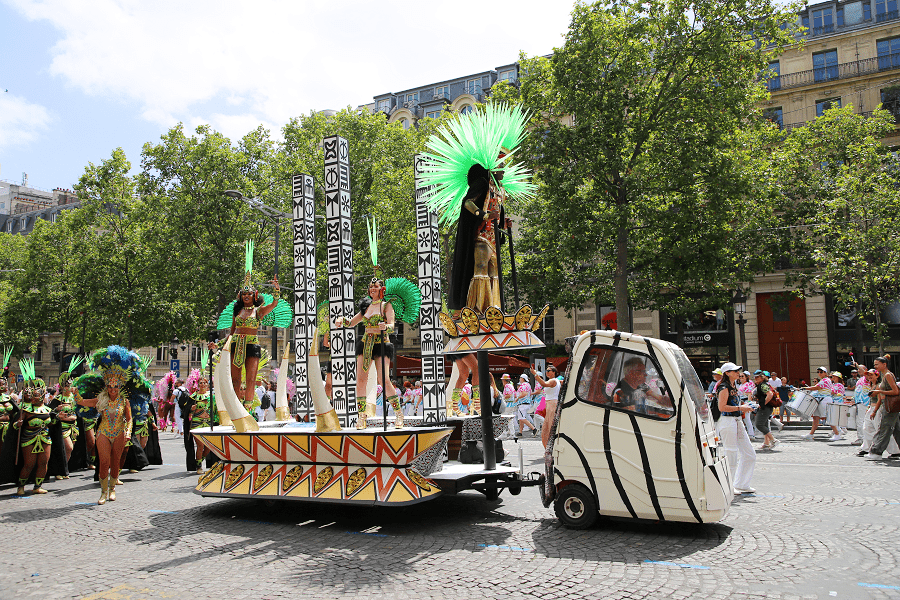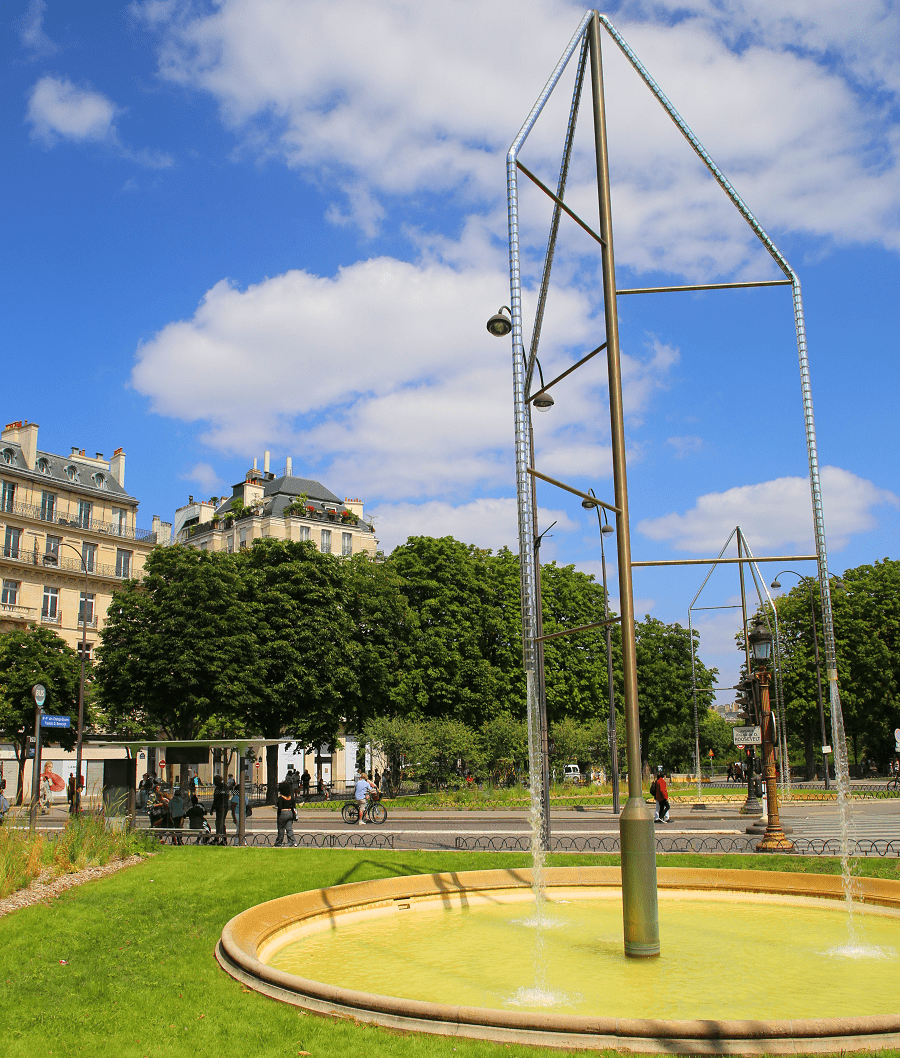Avenue des Champs-Élysées (often abbreviated Champs-Élysées, sometimes Champs) is a street in Paris (France). Nearly 2 kilometers long and following the historic axis of the city (from Louvre to the Arche de la Défense), it is a central thoroughfare connecting Place de la Concorde to Place Charles-de-Gaulle (Arc de Triomphe de l’Étoile) in the 8th arrondissement.
A major tourist site, it is often considered to be the most beautiful avenue in the capital, and is known in France as the “most beautiful avenue in the world.”
History
Until the reign of Louis XIV, the land where the Champs-Élysées runs today was largely occupied by fields and kitchen gardens. The Champs-Élysées and its gardens were originally laid out in 1667 by André Le Nôtre as an extension of the Tuileries Garden, the gardens of the Tuileries Palace, which had been built in 1564, and which Le Nôtre had rebuilt in his own formal style for Louis XIV in 1664.
Le Nôtre planned a wide promenade between the palace and the modern Rond Point, lined with two rows of elm trees on either side, and flowerbeds in the symmetrical style of the French formal garden. The new boulevard was called the “Grand Cours”, or “Grand Promenade”. It did not take the name of Champs-Élysées until 1709.
Throughout its history, the avenue has been the site of military parades.
The Champs-Élysées has encountered rising problems with air pollution from the estimated 3,000 vehicles per hour which drive through its eight lanes. It is more polluted than the Périphérique ring road which encircles the city, with nitrogen dioxide levels twice as high as the recommended limit set by the World Health Organization.
Main sights
No. 6: former location of La Pâtisserie Gloppe.
No. 25: Hôtel de la Païva. This private mansion, one of the last on the avenue, was built between 1856 and 1866 by the architect Pierre Manguin for Esther Lachmann, Marquise de Païva, known as La Païva (1818-1884), famous courtesan of the Second Empire.
No 27-33: Gaumont Champs-Élysées Marignan cinema.
No. 28: during the Second World War and the Occupation, headquarters of the small pro-Nazi group “Jeune Front”, located in the orbit of the French National-Collectivist Party of the former radical-socialist journalist Pierre Clémenti.
No. 30: home of the Count of Monte Cristo in the novel by Alexandre Dumas.
Nos. 31-33: the writer Colette resided there from 1935 to 1938, after having lived from 1930 at the Claridge Hotel, on the same avenue.
No. 36: hotel of M. G. Béjot (in 1910).
No. 37 (corner of rue Marbeuf): residence of Béatrice Charlotte Antoinette Denis de Kérédern de Trobriand (1850-1941).
No 50: former Gaumont Champs-Élysées Ambassade cinema.
No. 53: L’Atelier Renault (current name). It was in 1910 that Louis Renault himself decided to come to the famous avenue. He set up a vast store there to display and sell his luxury vehicles. Later, he would also acquire No. 51 to expand his space. After nearly 40 years of operation and nearly 800,000 visitors per year, Renault decided to renovate its concept and opened, in 2000, L’Atelier Renault which remains an exhibition and image site for the brand and continues to host a restaurant located on the mezzanine. The site receives an average of 2.5 million visitors per year.
No. 63: headquarters of the Mühlbacher car factory. In 1910 housed the Aero-Club de France which is today at 6, rue Galilée. Hosted the Perfumerie Kerkoff store.
No 66: the “Le66 ChampsElysées” concept store created by architect Fabrice Ausset in 2006.
No. 68: building designed in 1913 by the architect Charles Mewès and occupied on the ground floor by the perfumer Guerlain. Interior decor.
No 70: Vuitton Building (now the Marriott Hotel). Late Art Nouveau style facade built in 1914 by the architects Louis Bigaux and Koller.
No. 68 and 70: The six floors of these two entire buildings were occupied from 1914 to 1933 by Maison Jenny, founded by Jenny Sacerdote in 1909, where 20 sewing workshops and the fashion house’s salons were installed.
Nos 76-78: Arcades du Lido. The building at this address has a shopping arcade on the ground floor which overlooks the Champs-Élysées on one side and Rue de Ponthieu on the other. The Arcades of the Champs-Élysées, “a permanent fair of luxury shops”, were built in 1925 by the architect Charles Lefèbvre and his associates Marcel Julien and Louis Duhayon on the site of the former Hôtel Dufayel.
No. 77: apartment briefly occupied by Joséphine Baker, then purchased by Ruth Virginia Bayton in 1929.
No 79: Queen nightclub, between 1992 and 2015.
No. 82: headquarters of the France-America committee from 1918 to 1926.
No. 91 (corner of rue Quentin-Bauchart): building where the journalist and press boss Léon Bailby (1867-1954) set up the offices of the daily newspaper Le Jour in the 1930s.
No. 92: during the German occupation, headquarters of the magazine Der Deutsche Wegleiter für Paris, intended for the occupation troops.
No. 101: block building also bordering Avenue George V, Rue Vernet and Rue de Bassano, designed by the architects Louis-Hippolyte Boileau and Charles-Henri Besnard in 1931 to accommodate the offices of the National Tourist Office. Since 2005, flagship store of Louis Vuitton.
No. 102: Yunus Emre Institute – Cultural Center of Turkey.
No. 114: Alberto Santos-Dumont (1873-1932), pioneer of aviation, lived in this building in front of which he landed his airship in 1903.
No. 116: headquarters of Radio-Paris during the Occupation, in the requisitioned premises of the Paris Post Office. After the war, French Radio broadcasting moved there.
No. 119: Carlton Hotel. Built in 1907 by architect Pierre Humbert. Became the headquarters of Air France in 1988.
No. 120: James Gordon Bennett junior (1841-1918), owner of the New York Herald and patron of ballooning, lived in this building. Pierre Laval had his law offices there in the 1920s.
No. 121: this imposing Haussmann building was designed in 1907 by the architect Pierre Humbert.
No. 122: Count Henry de La Vaulx (1870-1930), pioneer of aviation, lived at this address from 1898 to 1909.
No. 124 (and 2, rue Balzac): private mansion built shortly before 1858 for Santiago Drake del Castillo, one of the rare preserved examples of the hotels that lined the avenue during the Second Empire.
No. 127 (and 26, rue Vernet): this building was designed by Pierre Humbert. Now it’s the Lancel flagship store.
No. 136 (and 1, rue Balzac): private mansion of Mrs. C. B. de Beistegui (in 1910). Today the ground floor is occupied by the Peugeot automobile showroom; despite everything, it has preserved a rich decor in the lounges on the first floor.
No. 138: hotel of William Kissam Vanderbilt (1849-1920).
No. 142: House of Denmark.
No. 144: entrance to the Étoile tunnel, road tunnel connecting Avenue de la Grande-Armée passing under the Arc de Triomphe de l’Étoile.
No. 146: Cahiers du cinéma had their offices there.
No. 156: Carcano hotel (Qatar embassy in France).
Shopping
The arrival of global chain stores in recent years has strikingly changed its character, and in a first effort to stem these changes, the City of Paris (which has called this trend “banalisation”) initially decided in 2007 to prohibit the Swedish clothing chain H&M from opening a store on the avenue; however, a large H&M store opened two years later at 88 Champs-Élysées. In 2008, American clothing chain Abercrombie & Fitch was given permission to open a store.
The Champs-Élysées has mid-size shopping malls, extending the shopping area: Élysées 26 (26) with Agatha jewellery and l’Eclaireur fashion, Galeries du Claridge (74) with Annick Goutal perfumes, Fnac, Paul & Shark, Arcades des Champs-Élysées (78) with Starbucks. The list of fashion stores include Adidas (22), Abercrombie & Fitch (23), Zara (40, 44), J.M. Weston (55), Foot Locker (66), Longchamp (77), Nike (79), Levi’s (76), H&M (88), Morgan (92), Lacoste (93-95), Marks & Spencer (100), Louis Vuitton (101), Hugo Boss (115), Massimo Dutti (116), Petit Bateau (116), Milady (120), Dior (127), Celio (146, 150). The list of perfume stores include Guerlain (68) (Le 68 de Guy Martin), Sephora multi brand (70), Yves Rocher (102). Jewellers: Tiffany & Co. (62), Bulgari (136), Swarovski (146), Cartier (154). Book and music store: FNAC (74). The list of car show-rooms include Citroen (42), Renault (53), Toyota (79), Mercedes (118), Peugeot (136).
Main facts
- Length 1,910 m (6,270 ft)
- Width 70 m (230 ft)
- Arrondissement 8th
- Coordinates 48°52′11″N 2°18′27″E
See more:







